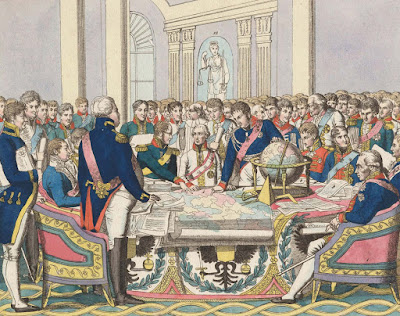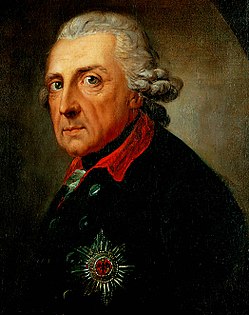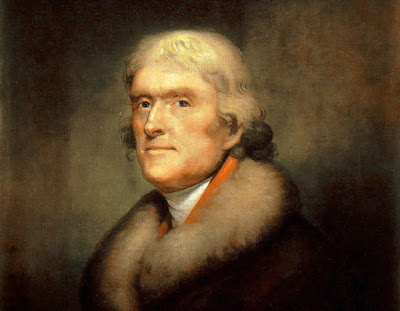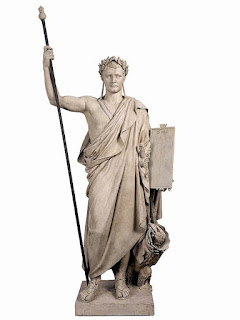Inocencio Xpainted by Velázquez and Bacon
The Germanic invasion put an end to the unified Western Roman Empire. The geographical area was occupied by different Germanic Nations that became independent kingdoms. The idea of a sole universal emperor was replaced by different kings. Nevertheless people missed the idea of belonging to the same political body. The Germanic nations admired and missed the glorious time of Imperial Rome. Their kings tried to imitate Roman emperors. But most important, the majority of population was of Roman origin. Roman authorities had disappeared after 476 A.D. but there was an institution that survived: the Roman Catholic Church. It was Roman because its head was the Bishop of Rome, that became the “father” of all Christians (Pope). It was Catholic because it was “Universal” (meaning Through everything “kathos-holos” in Greek), as since 380 AD it became the official religion of the Universal Roman Empire. And it was the Church as it was an organization integrated by the “Assembly” (“Ecclesia” in Greek Language) of all Christians.
Almost the whole Roman population in 476 AD was catholic. This is why their religious authorities, the Bishops, became very powerful. To the point they induced the Germanic Kings to convert themselves and their nations to the new religion. The Church became a very powerful organization.
The consequence of all this was that despite the diversity of kingdoms there was a religious and spiritual unity under the authority of the Pope, head of the universal assembly (Church) of Christians. It did not matter if you were Roman, Visigoth, Frank, Saxon, Burgundian. Your nation did not matter in the religious field as everyone had the same spiritual narrative. Despite the existence of different “nations”, unity was preserved through religion.
Papacy is an overwhelming institution as it has been there since Saint Peter. More than 2000 years. Which is a hell of continuity. The pope is not the religious leader of the World anymore. Not even for the Westerners, nor the Christians. As besides the Catholics there are Orthodox, Protestants, Episcopalians, and a whole sort of different Christian sects. Nevertheless the Roman Catholic Church is still the most powerful religious organization of the West. And the Pope is one of the World most respected leaders.
In this chapter we will see how the fragmentation of the political scene in Europe after the end of the 5th century was counteracted by the rise of a simultaneous universal power. First in the religious field, with the Roman Catholic Church. Thanks to a thorough centralization imposed by the Roman popes. The Eastern Schism in 1054 that brought an independent Orthodox church in Constantinople was a logic consequence of the fact that the West did not accept the authority of the Byzantine emperors. But this was counteracted by the rise of the papal power that brought a Western theocracy that was extremely powerful during the 12th and 13th century, as popes decided of everything. And not only as spiritual and religious leaders, as since 754 they had their own territorial domain: The Papal States.
The popes were so powerful that they decided to break politically with the Eastern Byzantine emperors pushing to the appearance of an independent Western emperor. First with Charlemagne since 800, and with the Holy Roman Empire of the German nation, from 962 until 1806 !
Charlemagne idealized by Durer
The Western emperors were not alone, as their crowning had to be performed by the popes. It was therefore a dual empire. This was a difficult situation because popes and emperors fought each other for a long time in a harsh struggle. Finally popes and emperors ended up losing most of their power as the “National Monarchies” became the leading powers. But the “imperial idea” that there was a universal power lasted longer. The Holy Roman Empire of the German nation lasted until 1806, but was replaced by the Napoleonic empires of 1804-1814 and 1852-1870. In 1871 Bismarck pushed for the creation of the Second Reich that lasted from 1871 to 1918. And finally Adolf Hitler founded the Third Reich from 1933 to 1945.
Emperor Mathias towards 1625
Why do we study the popes and the emperors in the perspective of the formation of the European Union? Because it is important for you to know that the triumph of the State in the European political history has been in a great deal a fight for getting rid of the universal Western approach, opposed to the ideas of “nationalism” and “statalism”.
The "emperors" of the 1st, 2nd and 3d Reich
It is extremely interesting that one of the causes of the Brexit was the fact that more than half of the British people, especially the older ones, do miss the British Empire. And unconsciously they believe that becoming fully independent from the European Union will bring back the glorious past of their nation as head of this strange thing called the Commonwealth. Remember that the Queen Elisabeth the II is still surprisingly the head of State of Canada and Australia, among other countries. With not a real power at all, but with a heavy symbolic load and a lot of old British still dream of it.
This bring us to an important point. The European Union is still essentially only a huge market. It has no soul. No past. We still feel closer to our nation-states, because we have shared a common history and we have a common background. The big problem that the EU face, and you will understand it when you will read Robert Menasse’s The Capital is that Brussels is a strange mixture of people that fight for economic interests but do not share a common political and cultural project. They do not feel proud of belonging to the EU.
After Brexit the big question is if the 27 remaining Member states will stay united in dealing with the UK or statal private interests will prevail. May be we should remember then that for a long time, despite the fact that Europe was divided in different states, we shared the universal idea that brought our ancestors together in a different level. They felt simultaneously National and European. But for achieving this today the European Union should develop a more appealing narrative, beyond money and markets. To minimize the temptation of “Chacun pour soi”.
The first Roman emperor: Augustus
Napoleon imitating Augustus 18 centuries later
EXERCISING:
This week you have to read pages 30 to 44. Bear in mind the structure of the text. First you will understand how and why the popes became the uniting power of all westerners, despite their “national” origin. Here you have to realize the importance of Gregory I, the Promissio carisiaca, the Cluniac Reform and the Dictatus papae, leading to the Papal Theocracy (pages 30-31). Then you should realize that the decline of the papacy brought the fragmentation of Europe with the Anagni Outrage, The Avignon papacy and the Western Schism that brought the Protestant Reform. The appearance of Gallicanism and Henry VIII’s Act of Supremacy creating the Church of England (pages 31 to 33).
Then you will see how the Papacy brought back to the West the Imperial idea, that remained an essential part of our culture (pages 33-34).
The last part of the text deals with how the Territorial monarchies triumphed over Christian Universalism, and this victory required a new narrative for sustaining the legitimacy of the Absolute Monarchs that founded Modern State. With some extremely interesting texts from Machiaveli, Bodin and Hobbes. Read them carefully. (Pages 35-43).
Finally you should realize why the disappearance of a common religious narrative after the Westphalia Treaties in 1648 was the cause of the rise of a Europe integrated by independent states that fought each other in search for Supremacy. A fight that would get tougher with the appearance of the National State model in the 18th century western revolutions. A matter that we will study in Teaching guide number 4.
Read also the foot notes in order to understand the concepts and answering the questions of pages 49 to 51 in your Class Notebook.
Concerning the dates this week is a little harder as you should learn a few more than in precedent weeks: 590-604, 754, 800-843, 962-1806, 1054, 1075, 1303, 1521, 1527, 1534, 1540, 1572, 1618-1648, 1804-1814, 1852-1870. 1871-1918, 1929, 1933-1945
Concerning your reading about education: no new assignment, but review your notes on the readings of previous weeks. And be ready to discuss all this in class.



















